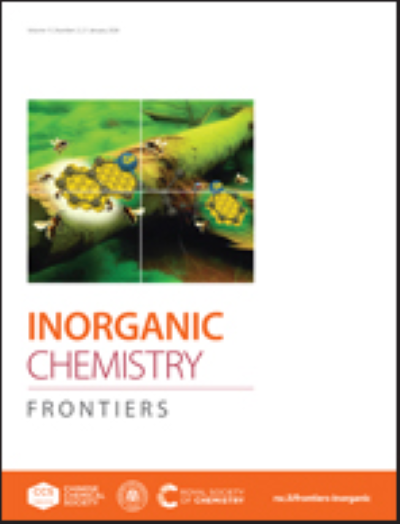表面起皱的钯基纳米线的普遍合成促进乙二醇和乙醇氧化电催化
IF 6.4
1区 化学
Q1 CHEMISTRY, INORGANIC & NUCLEAR
引用次数: 0
摘要
精确调整钯基合金的形貌是提高醇电氧化催化活性的有效策略。然而,合成定义良好的纳米线的方法往往不是普遍适用的,而且往往相对复杂。在这项研究中,我们开发了一种通用的方法来合成PdM纳米线(M = Sn, Pb, Sb, Bi),使用简单的一锅溶剂热共还原技术。钯的电子性质可以通过掺杂其他元素来改变。双金属协同效应使得PdSn纳米线(PdSn NWs)在乙二醇氧化反应(EGOR)和乙醇氧化反应(EOR)中都具有优异的催化活性。具体来说,在EGOR中测量的PdSn纳米线的质量活性为7.56 A mgPd⁻¹,是商业Pd/C的3.86倍。在EOR中,质量活度达到6.43 A mgPd⁻¹,比商业Pd/C提高了8.14倍。此外,PdSn纳米线在稳定性测试中也表现出优异的稳定性。该研究为开发具有高效醇电氧化性能的纳米线催化剂提供了重要的见解。本文章由计算机程序翻译,如有差异,请以英文原文为准。
Universal Synthesis of Surface-Wrinkled Pd-based Nanowires Boosts Ethylene Glycol and Ethanol Oxidation Electrocatalysis
Precisely tuning the morphology of palladium-based alloys is an effective strategy for enhancing the catalytic activity in alcohol electrooxidation. However, methods for synthesizing well-defined nanowires are often not universally applicable and tend to be relatively complex. In this study, we developed a universal method to synthesize PdM nanowires (M = Sn, Pb, Sb, Bi) using a straightforward one-pot solvothermal co-reduction technique. The electronic properties of palladium can be modified through the doping of other elements. The bimetallic synergistic effect endows PdSn nanowires (PdSn NWs) with exceptional catalytic activity in both the ethylene glycol oxidation reaction (EGOR) and the ethanol oxidation reaction (EOR). Specifically, the mass activity of PdSn nanowires in the EGOR was measured at 7.56 A mgPd⁻¹, which is 3.86 times more than that of commercial Pd/C. In the EOR, the mass activity reached 6.43 A mgPd⁻¹, demonstrating an 8.14-fold enhancement over commercial Pd/C. Furthermore, PdSn nanowires also exhibited excellent stability during stability tests. This study provides significant insights into the development of nanowires catalysts with highly efficient alcohol electro-oxidation performance.
求助全文
通过发布文献求助,成功后即可免费获取论文全文。
去求助
来源期刊

Inorganic Chemistry Frontiers
CHEMISTRY, INORGANIC & NUCLEAR-
CiteScore
10.40
自引率
7.10%
发文量
587
审稿时长
1.2 months
期刊介绍:
The international, high quality journal for interdisciplinary research between inorganic chemistry and related subjects
 求助内容:
求助内容: 应助结果提醒方式:
应助结果提醒方式:


